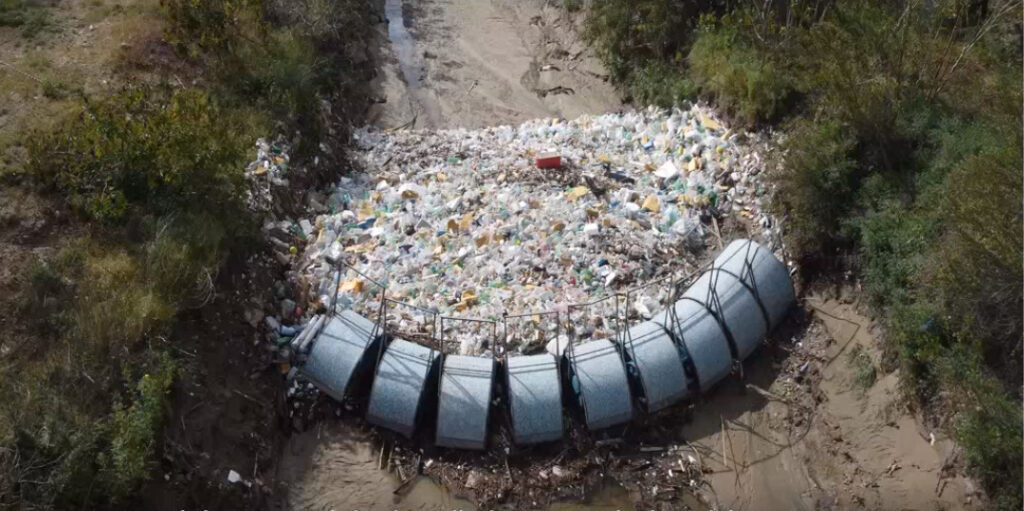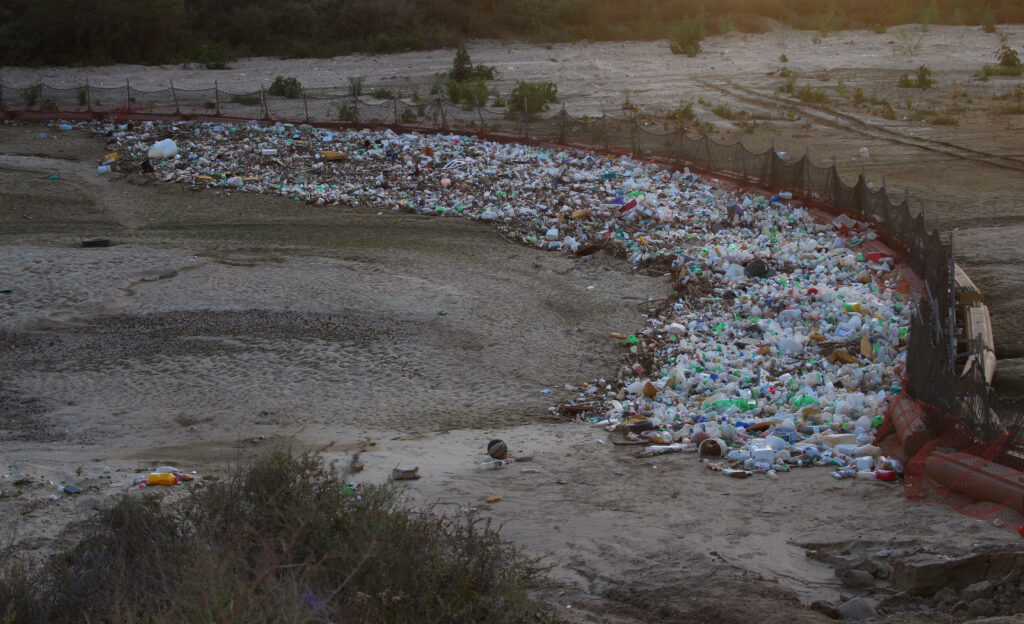
There are too many problems and too little money. There may be heaps of governing agencies trying to solve in the Tijuana sewage crisis, but all their meetings carry that theme.
The same was true of the first meeting of the newest San Diego Citizens’ Forum Board, a new body created by the United States Section of the International Boundary and Water Commission (USIBWC). The ten-person board met July 12 in Coronado to discuss the myriad ways the problem might be solved.
“We have been kicking this can down the road for years, and not really addressing the true cost of the wastewater treatment issue,” said board member Richard Kiy, president and CEO of Institute of the Americas.
The crumbling infrastructure treating Tijuana’s wastewater received an influx of federal money this year to fund projects to address the issue and eliminate sewage runoff into coastal waters that cause widespread beach closures in south San Diego.
The funding – $300 million from the U.S. and $144 million from Mexico – was never enough to fully solve the problem, but a major blow came last month when it became evident that about $115 million in deferred maintenance costs would deplete the budget even more.
As the problems quickly outpace the funding set to address them in an issue that has been causing beach closures for decades, local lawmakers have declared a state of emergency and are urging the Newsom and Biden administrations to do the same.
But wastewater isn’t the only issue.
Tijuana lacks trash pickup service in poor neighborhoods, where homes also are not connected to sewage systems, so when rains come, a hodgepodge of debris and waste is pushed into the Tijuana River Valley.

This hurts marine life, local vegetation, and overall water quality. The State Water Board in February allocated $34 million to address pollution in both the Tijuana River and the New River, which flows east to the heavily polluted Salton Sea.
Nearly $5 million of that money will be used in a two-year pilot of a trash boom system in the concrete-lined portion of the main Tijuana River Channel. The booms will operate for two consecutive storm seasons, and information yielded from it will be used to develop permanent trash control infrastructure.

Oscar Romo described the proposed project to the IBWC’s Citizens Board at its Tuesday meeting. Romo is the director of the nonprofit Alter Terra, which studies problems that arise from unplanned urbanization.
The potential trash yield from these floating trash booms is 30,000 cubic yards, Romo said, but researchers will use the pilot to anticipate just how much trash the U.S. side of the border can expect.
After trash is captured, it will be moved into bins and transferred to the Otay Landfill. Board members and the public questioned whether the booms would work during heavy rainfall periods, when water flow might be too strong to trap debris, and whether the additional garbage would put a strain on San Diego’s landfill facilities.
But that’s exactly what the demonstration is meant to do, Romo said: The two years of trash booms are not just to stop trash; they are also meant to be a research endeavor to inform a permanent solution.
Other projects funded by the water board include a sediment and trash control basin in Smuggler’s Gulch and restoration of a historic but illegal dumping ground so large that it’s disrupted the Tijuana River’s flow.
Mexico’s projects
A chief concern among the board and the public at Tuesday’s meeting was Mexico’s contribution. Though Mexico has allocated funding toward cleaning up the Tijuana River Valley, the U.S.’s share is much heftier, despite most of the problems with both trash and wastewater originating south of the border.
The only project on the U.S. side is the South Bay International Treatment Plant, which requires significant maintenance and expansion, which treats wastewater originating in Tijuana. However, the U.S. is bound by treaty Minute 328 to increase its operational capacity to at least 50 million gallons per day.
“Is Mexico properly motivated to put these solutions into place?” asked board member Ed Spriggs, former member of the Imperial Beach City Council. “Because otherwise, we’re just raking the same leaves that keep coming down from trees.”
Spriggs noted that the technology was neither new nor difficult to understand, and questioned why Mexico does not already have proper trash disposal and wastewater treatment plants in place.
“Mexico is not really a poor country, although here at the border it seems like they are,” Spriggs said. “Is the capacity there to address the plant, pump stations, trash management, etc., if there was political will to do it?”
Others at the meeting also questioned if Mexico should be pulling more weight. In June, Rep. Scott Peters asked Mexico to consider short-term solutions to keep beaches clean and to provide regular updates on projects underway across the border.
It’s difficult to label Mexico as “rich” or “poor.” Mexico became a developed country during World War II, and it boasts the 15th-largest world economy. (The United States’ ranks first, and if California were a country, it would come in fifth.) However, 44% of the country’s population lives in poverty, with 10.5% in extreme poverty. Mexico’s GDP per capita ranks in 70th place worldwide, compared to the United States, at number 13.
Potential solutions seem limitless, but funding is not
Other solutions discussed included a reverse osmosis treatment system like the one Orange County completed this year, making it the first place in the world to recycle all its treatable wastewater and creating enough water to meet the needs of a million people.
“We are sitting on a groundwater basin of 1800 square miles,” said board member Leon Benham, executive director of the Citizens for Coastal Conservancy. “[A reverse osmosis treatment plant] would stop the sewage water from being dumped off into the ocean, and it would also provide an incentive: that Mexico is desperately in need of water, and in our future, we’ll desperately need water.”
Tijuana residents face frequent, unpredictable water shutoffs – and that’s in homes connected to the city’s water supply – due to insufficient water supply from the Colorado River. San Diego also gets the bulk of its water from that source, creating an uncertain future for the region’s water supply.
There are plenty of potential solutions, but public comment implored decision makers to find a fast solution after living with the sewage and beach closures for decades.
“The truth is, there’s obviously a tremendous amount of new funding that needs to be obtained,” said board member John Duncan, a member of the Coronado City Council. “When the EPA transferred $300 million to the IBWC, they had mentioned by their own estimate that they needed up to $600 million. We all know we’re at minimum $300 million short, maybe more.”




